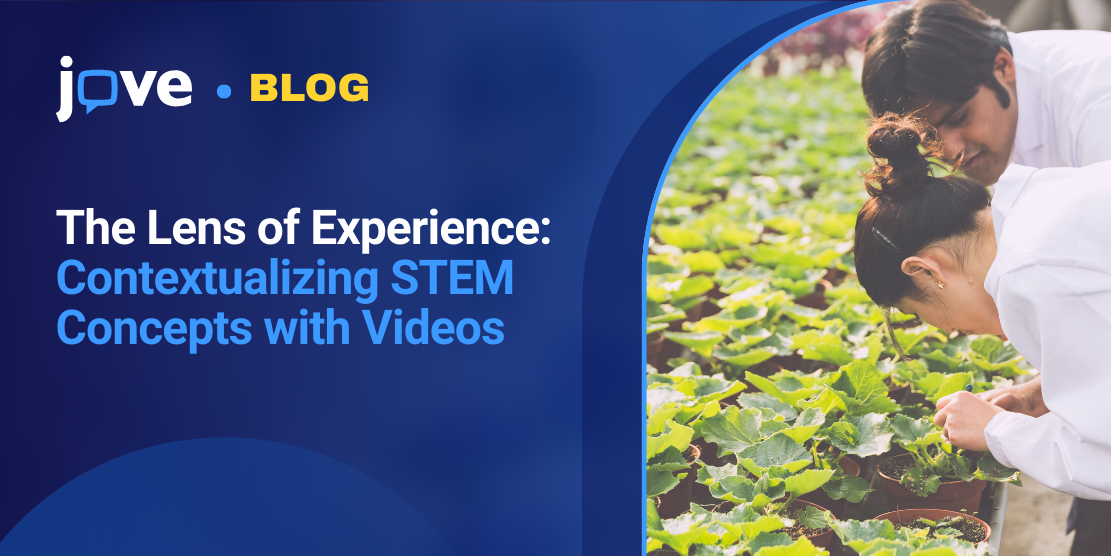I remember my first-year life sciences labs well. The benches were full, timers were buzzing, and a handful of instructors moved around from group to group, frequently looking just as overwhelmed as we did. I left some sessions feeling like I’d just managed to follow the steps, never mind see how the technique applied to a real problem or why it mattered outside the room.
The gap between procedure and purpose is exactly what hands-on learning tries to close in STEM, within the limits faculty and learners face: large classes, limited time and materials, and varying levels of student preparedness.
Why Learning by Doing Sticks
Experiential learning asks students to do more than absorb information. It invites them to apply ideas, test outcomes, and reflect on results. When learners engage in this way, they build motivation, strengthen critical thinking, and retain concepts more effectively.1,2
Effective experiential tasks share four traits: students participate actively, the work connects to a real or realistic context, there is structured reflection, and there are chances to improve through iteration. These principles may seem obvious in field-based subjects like ecology or geology, but they can also frame abstract domains in ways that make knowledge feel applicable, such as using thought experiments in physics or roleplaying in psychology.
In a recent JoVE webinar on experiential learning in STEM, Alice Pistono (MSc), Director of Brand and PR, explained why this approach is gaining traction among faculty. The aim, she emphasized, is not complex activities for their own sake, but relevant context and room for students to think and act. When learners see how a concept operates beyond the textbook, engagement increases and understanding deepens.
How Visuals Help
Video and other visuals aren’t a substitute for lab work; they are a force multiplier. They make scarce experiences repeatable, reduce setup time, and provide a consistent reference students can revisit, reducing repeated explanations in class. Videos can:
- 🔷 Simulate real settings when equipment, space, or materials are limited.
- 🔷 Demonstrate real techniques with correct sequencing, posture, and safety.
- 🔷 Prepare for fieldwork, orienting students to sites, tools, and procedures.
- 🔷 Build career readiness by showing industry workflows and documentation norms.
- 🔷 Enhance the ability to tackle real-life scenarios through repeatable exposure.
Practical Classroom Approaches
1. Simulations
Provide a structured situation with rules, limits, and information, and have students choose a course of action and explain it.
2. Roleplaying
Give students different roles so they can practice seeing a problem from multiple perspectives.
3. Live demonstrations
Demonstrate a technique or phenomenon with planned decision points where students predict, explain, and answer interactive prompts.
4. Collaborative problem solving
Pose a challenge that requires teamwork: something with complex data, unclear steps, or more than one possible answer.
5. Hybrid/online solutions
Use a flipped model to protect scarce in-person time for higher-order work like debate and discussion.
Moving Forward
Experiential learning works best when it is both practical for faculty and meaningful for students. Videos make this easier by creating shared references, accelerating technique acquisition, and allowing class time to focus on decision making, discussion, and problem solving.
One success story highlighted in the webinar comes from the University of Pavia, where Dr. Gian Battista Parigi, Professor of Pediatric Surgery, faced the challenge of preparing students for clinical skills in a blended setting. By integrating video resources into group activities, his students reported an overwhelmingly positive response. They gained confidence before entering examination rooms and showed higher engagement during practice. Faculty also found the approach valuable, since students arrived more prepared and ready to learn.
These are exactly the outcomes many STEM instructors hope for: students who are not only retaining knowledge, but also ready to apply it with confidence. The path forward doesn’t have to be complicated. Starting with short videos, structured reflection, and small-scale experiential tasks can begin to shift learning in ways that matter.
Look out for future webinars focused on experiential learning in different disciplines!
Explore experiential approaches for your own teaching and request a JoVE video playlist aligned with your syllabus.
- Kolb, D. A. (1984). Experiential learning: Experience as the source of learning and development. Prentice Hall.
- Kuh, G. D. (2008). High-impact educational practices: What they are, who has access to them, and why they matter. Association of American Colleges and Universities.





